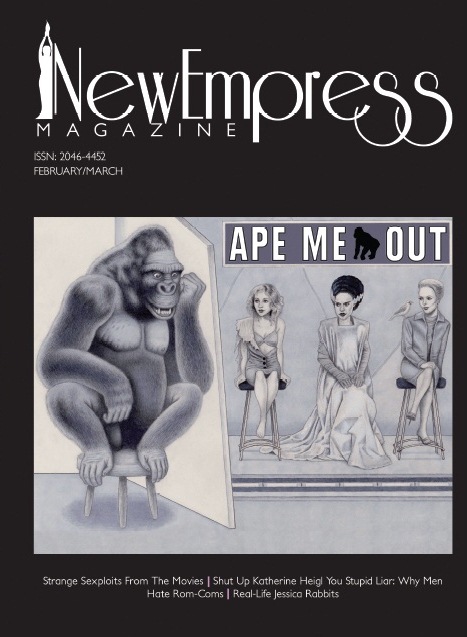Was Italian-born screen sensation, Rudolph Valentino, the original metrosexual? According to a vehement tabloid attack by Chicago Tribune, in July 1926, Rudy’s appreciation of cosmetics and fashion were tantamount to the fall of masculinity. The report notes masculinity all but ended when dudes quit the straight razor for the new-fangled type with a safety guard. “Do women like the type of ‘man’ who pats pink powder on his face in a washroom and arranges his coiffure in a public elevator?” The answer was a resounding ‘yes’.
Valentino, born Rodolfo Alfonso Raffaello Pierre Filibert Guglielmi di Valentina D’Antonguolla, was dead at the age of 31. Mourned by thousands of female – and male – fans across the world, he was the silver screen’s first modern romantic-hero icon, its ‘Great Lover’.
But what is the man’s reputation today? One hundred years ago, cinema was creeping towards the establishment of a truly popular art and entertainment. In the post-war years, the industry and accompanying appeal grew to cater more and more towards middle class audiences and taste. Fleapits became opulent picture palaces. The perils of Pauline and the japes of the Keystone Kops gave way to feature-length productions of melodrama.
Travel back to March 1913 and Valentino was still kicking his heels in the dust of Castellaneta, dreaming of America. He wasn’t processed through Ellis Island until December 1913 and for years he undertook all sorts of jobs – including dancer/gigolo – in New York before heading to the glorious light of California and the even more glorious lights of the studios.
Rex Ingram’s The Four Horsemen of the Apocalypse (1921) made Valentino a megastar to join the ranks of Gloria Swanson, Mary Pickford and Charles Chaplin. There had been Latin performers before, of course, usually occupying the role of villain. This was something a bit different. As opera and film star Geraldine Farrar noted: “Wouldn’t you think somebody’d be interested in trying out that young man, to see what he could do, what he had?” For a while, nobody was.
Screenwriter and executive June Mathis played a vital part in Valentino’s stratospheric rise in the movie world. She saw something of interest in those smooth Latin features and his ability to dance. Valentino could be a new sort of screen idol. Originally the character of Juan was nothing much to play. Mathis ordered it beefed up and a tango sequence to be included. It is this scene that captured the public’s imagination and the rest is history.
Rex Ingram’s film grossed over $1 million dollars at the box office and suddenly the kid from Castellaneta was a bona fide movie star. Mathis further helped craft Valentino’s persona – becoming his de facto Svengali – years before such a term was discussed regarding Marlene Dietrich’s and Josef von Sternberg. Without Mathis’s patronage, Valentino would never have had got his chance to shine.
The sensuality of the dance, the costume, the staging and Valentino’s smoldering looks confirm him as one of the earliest and most potent of screen icons. Valentino posed as tough, but respectful, especially to the ladies. Famous Players Lasky chief, Adolph Zuckor, summed up the Italian’s acting style: “ [He] was largely confined to protruding his large, almost occult, eyes until the vast areas of white were visible.”
Rudy wasn’t the most subtle performer but his persona played on the sensual side of desire and told you he could bring a woman to orgasm and rapture, unlike their brutish husbands at home. South of the border became south of the boudoir, as Richard Griffith and Arthur Mayer put it in their weighty 1957 tome, The Movies.
Clearly tabloids felt threatened by the Italian so they verbally attacked him. Valentino was no angel, he’d be involved in several scandals, including committing bigamy – but it did not tarnish his image as the world’s greatest lover. He went on to acclaim and fortune reprising his limited schtick in a variety of pictures until his unexpected death in 1926. Although he worked in silent movies, he was recorded singing in 1923, the only example of his voice extant and literally, on record. Listen to it here .
In 1921 the American movie industry gave the world something it hadn’t seen before. Ninety-two years on, the tango scene in The Four Horsemen of the Apocalypse still feels sexy and electric. The film made a packet and a new audience was found on the suggestion that women, not only men, liked to look too.














